
The Buenos Aires Customs House (Aduana) is a government building and architectural landmark in the Montserrat section of Buenos Aires.

The Buenos Aires Customs House (Aduana) is a government building and architectural landmark in the Montserrat section of Buenos Aires.
The French neoclassical building housing the Argentine General Customs Directorate (DGA) was commissioned during the administration of President José Figueroa Alcorta, and resulted from the marked expansion in Argentine foreign trade and the economy in the generation up to 1910, when the nation's GDP was estimated to have grown by over 8% a year. [1] Local architects Eduardo Lanús and Pablo Hary were commissioned in 1909 to design the new administrative offices for the Aduana, which was noteworthy not only for its 100 metres (328 ft) façade and its two turrets, but also for its use of carrara marble cladding throughout, as well as its numerous allegorical details such as the ornamental bull's heads and the marble caryatids along the cornice, some bearing intricate wrought-iron acanthus and laurel wreaths. [2]
The building was inaugurated by President Figueroa Alcorta in October 1910, days before his retirement. Following refurbishment works, on September 28, 2009, the Customs Building was declared a National Historic Monument by President Cristina Kirchner. [2]

The government bureau housed therein, the DGA, traces its origins to the San Nicolás Agreement of 1852, whereby all customs duties were nationalized. The provision, rejected by the Province of Buenos Aires, was first enforced following Buenos Aires leader Bartolomé Mitre's 1860 defeat at the Battle of Cepeda. The National Customs Administration was established in 1862, when following Mitre's election as president, Economy Minister Dalmacio Vélez Sársfield established the bureau (he had developed the Argentine Commercial Code in 1858). [3]
The building reflected the importance of customs duties to the national treasury itself, which from the colonial era of the Viceroyalty of the Río de la Plata until 1930, accounted for around 80 percent of government revenues. The bureau's importance declined after 1945, since which date these revenues have contributed 10-20 percent of the national budget. [3]
The bureau's autonomy later led to significant improprieties, notably the development in 1988 of a "parallel customs" by President Raúl Alfonsín's administrator of the office, Carlos Delconte, [4] and that of a racketeering network in 1991 overseen by President Carlos Menem's customs administrator and brother-in-law, Ibrahim al-Ibrahim (a Syrian national who spoke almost no Spanish). [5] Ultimately, the customs bureau was transferred to the Federal Public Revenue Administration (AFIP) by a 1997 decree signed by President Menem.
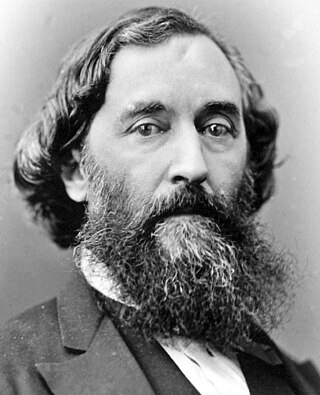
Bartolomé Mitre Martínez was an Argentine statesman, soldier and author. He was President of Argentina from 1862 to 1868 and the first president of unified Argentina.

The Casa Rosada, literally the Pink House, is the president of the Argentine Republic's official workplace, located in Buenos Aires. The palatial mansion is known officially as Casa de Gobierno. Normally, the president lives at the Quinta de Olivos, the president of Argentina's official residence, located in Olivos, Greater Buenos Aires. The characteristic color of the Casa Rosada is baby pink, and it is considered one of the most emblematic buildings in Buenos Aires. The building also houses a museum, which contains objects relating to former presidents of Argentina. It has been declared a National Historic Monument of Argentina.

Manuel Pedro Quintana Sáenz was the President of Argentina from 12 October 1904 to 12 March 1906. He died in office.
The Union of the Democratic Centre is a centre-right to right-wing conservative and economically liberal political party in Argentina. It was founded in 1982 by Álvaro Alsogaray who unsuccessfully run in the 1983 and 1989 presidential elections, and represented the conservative elite, technocrats, and classical liberals.

The Latin American Art Museum of Buenos Aires is an art museum located on Figueroa Alcorta Avenue, in the Palermo section of Buenos Aires.

La Nación is an Argentine daily newspaper. As the country's leading conservative newspaper, La Nación's main competitor is the more liberal Clarín. It is regarded as a newspaper of record for Argentina.
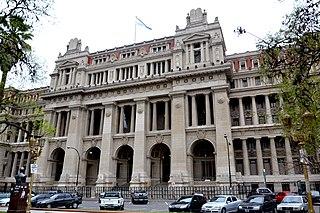
The Supreme Court of Argentina, officially known as the Supreme Court of Justice of the Argentine Nation, is the highest court of law of the Argentine Republic. It was inaugurated on 15 January 1863. However, during much of the 20th century, the Court and the Argentine judicial system in general, lacked autonomy from the executive power. The Court was reformed in 2003 by the decree 222/03.
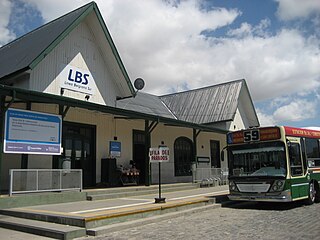
Buenos Aires is a former passenger railway station in the city of Buenos Aires, Argentina. The station was terminus of the Belgrano Sur line that runs trains along Greater Buenos Aires region.

The General Bartolomé Mitre Railway (FCGBM), named after the former Argentine president Bartolomé Mitre, is one of the six state-owned Argentine railway lines formed after President Juan Perón's nationalisation of the railway network in 1948 and one of the largest of Argentina. The six divisions, managed by Ferrocarriles Argentinos were later broken up during the process of railway privatisation beginning in 1991 during Carlos Menem's presidency.
In Argentina, State-owned railway companies run both, passenger and freight services within the country. The first State-owned company was Argentine State Railway, formed in October 1909 while José Figueroa Alcorta was President of Argentina.
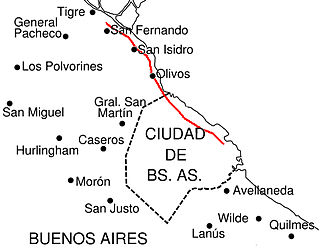
Avenida del Libertador is one of the principal thoroughfares in Buenos Aires, Argentina, and in points north, extending 25 km (16 mi) from the Retiro District of Buenos Aires to the northern suburb of San Fernando.

Carlos Rafael Fernández is an Argentine economist and was, from April 2008 to July 2009, the Minister of the Economy of the country.

Avenida Figueroa Alcorta is a major thoroughfare in Buenos Aires, Argentina, with a length of over 7 km (4.3 mi) along the city's northside.
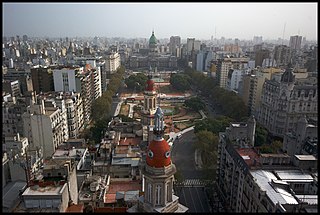
Plaza del Congreso is a public park facing the Argentine Congress in Buenos Aires. The plaza is part of a 3 hectare open space comprising three adjoining plazas to the east of the Congress building. The Kilometre Zero for all Argentine National Highways is marked on a milestone at the plaza.
Argentina held nine presidential elections between 1862 and 1910, every six years.

The Plaza Hotel Buenos Aires is a currently closed five-star hotel in the Retiro district, just steps from the Calle Florida shopping area and overlooking the Plaza San Martín. The hotel, inaugurated in 1909, was part of several international chains including InterContinental, and Marriott, until it was closed in 2017.

The Port of Buenos Aires is the principal maritime port in Argentina. Operated by the Administración General de Puertos, a state enterprise, it is the leading transshipment point for the foreign trade of Argentina.

The Ministry of Public Works Building, now known as the Ministry of Health Building is a public building in the rationalist style located on the intersection of 9 de Julio Avenue and Belgrano Avenue, in the neighborhood of Monserrat, in Buenos Aires, Argentina. It is currently used by the Argentine Ministry of Health.
The Argentine presidential election of 1910 was held on 13 March to choose the president of Argentina and 63 of 120 seats in the Chamber of Deputies. Roque Sáenz Peña was elected president.
Amalia Beatriz "Amira" Yoma is an Argentine political advisor and restaurateur. She is best known for being the Director of Hearings in the presidential administration of her then brother-in-law Carlos Menem, and for being charged in the drug money laundering scandal which came to be called Yomagate.